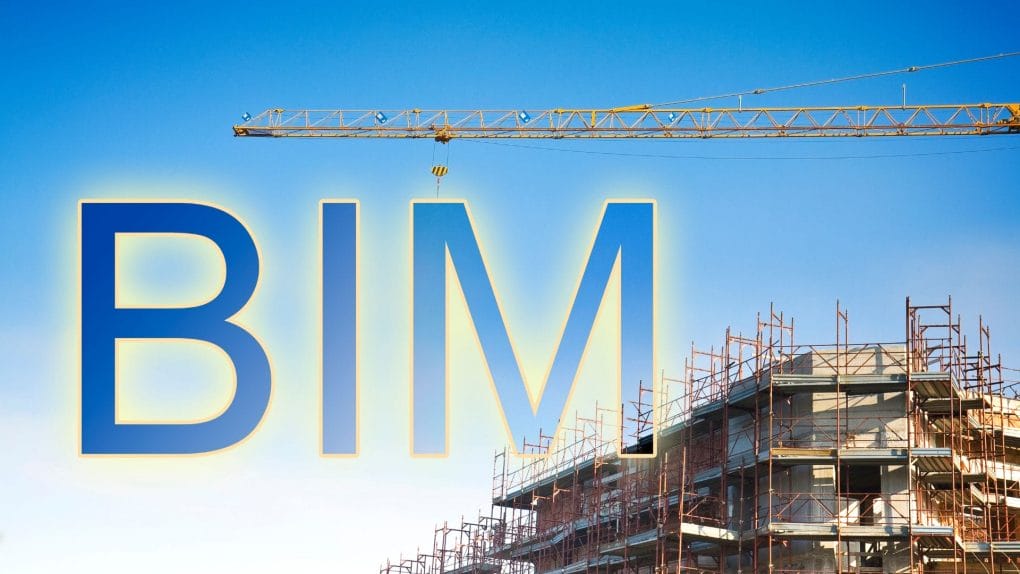In today’s fast-paced construction industry, staying competitive means adopting the latest techniques and tools. Building Information Modeling (BIM) has transformed the way we approach design and construction, but like any powerful tool, it must be optimized to unleash its full potential. At AXA Engineers, we understand that efficient BIM workflows are the key to achieving true lean construction. In this blog, we’ll guide you through how to streamline your BIM processes for maximum efficiency, cost savings, and innovation.
What Is BIM
Before we dive into the benefits of BIM and how to optimize BIM workflows, let’s first define what BIM is. BIM is a digital representation of the physical and functional characteristics of a building. It provides a shared knowledge resource for information about a facility, forming a reliable basis for decisions during its lifecycle, from inception onward.
Lean construction, on the other hand, is all about minimizing waste and maximizing value. The goal is to streamline processes and focus only on activities that add value to the customer. When BIM and lean construction techniques are used together, they can revolutionize project outcomes by enhancing collaboration, reducing costs, and speeding up project timelines.
But there’s a catch—many teams are not using BIM to its full potential. Inefficient workflows can turn this powerful tool into a bottleneck rather than an enabler.

The Challenges of Inefficient BIM Workflows
At AXA Engineers, we’ve seen it all when it comes to BIM workflows. One of the most common challenges teams face is inefficient workflows that create obstacles instead of smooth pathways. These inefficiencies can manifest in several ways:
- Data Silos: When information is not easily accessible or shared across teams, it leads to communication breakdowns and delays in decision-making.
- Manual Processes: In some cases, BIM workflows still rely on manual data input, which increases the chance of human error and slows down the project.
- Inconsistent Documentation: Without standardized workflows, documentation can vary greatly from one project to another, leading to confusion and delays.
These problems not only slow down your projects but also hinder your ability to apply lean principles effectively.
5 Key Tips to Optimize Your BIM Workflows for Lean Construction
To overcome these challenges and optimize your BIM workflows, consider implementing the following best practices:
1. Standardize Workflow Processes
One of the most effective ways to streamline BIM workflows is by standardizing processes across teams. This ensures that everyone is following the same procedures, reducing the likelihood of errors and miscommunication. Standardized workflows also make it easier to onboard new team members and ensure consistency throughout the project lifecycle.
By creating templates for common BIM tasks, such as clash detection, quantity takeoffs, and model updates, you can significantly reduce the time spent on repetitive tasks. These templates should be adaptable to the specific needs of each project but remain consistent in terms of structure and approach.
2. Invest in Interoperable Software Solutions
Interoperability is critical in BIM workflows. Ensuring that all software platforms used in a project can effectively communicate and share data can help avoid data silos and the need for manual data entry. Choosing software solutions that support open standards (such as IFC) allows for seamless data exchange between different stakeholders, including architects, engineers, and contractors.
By integrating software solutions such as Autodesk Revit, Navisworks, and Civil 3D, teams can work within a single, unified environment, reducing the risks of data fragmentation and improving the overall accuracy of the models.
3. Prioritize Real-Time Collaboration
In Lean Construction, timely communication and decision-making are vital. Real-time collaboration tools, such as cloud-based BIM platforms, can help teams stay connected and informed throughout the project. By enabling multiple stakeholders to work on the same model simultaneously, real-time collaboration minimizes delays and ensures that decisions are made with the most up-to-date information.

Platforms like Autodesk BIM 360 or Trimble Connect enable teams to share models, drawings, and project updates instantly, allowing for quicker feedback loops and faster issue resolution. This approach helps to maintain the momentum of the project, preventing bottlenecks caused by waiting for information or approvals.
4. Implement Lean Principles in BIM Management
Lean principles, such as the continuous elimination of waste (muda), can be directly applied to BIM workflows. This involves regularly reviewing and refining processes to identify inefficiencies. Conducting regular audits of your BIM processes can help you pinpoint areas where time and resources are being wasted, such as redundant tasks or communication bottlenecks.
Adopting tools like value stream mapping can provide a clear visual representation of your workflow, making it easier to identify and remove non-value-adding activities. This not only improves the efficiency of your BIM processes but also aligns them more closely with the goals of Lean Construction.
5. Leverage Automation and AI Tools
Automation is an essential element in optimizing BIM workflows. By automating repetitive tasks, such as clash detection or data entry, teams can focus on more complex and value-adding activities. Many BIM platforms now offer built-in automation tools or the ability to integrate with third-party applications that provide advanced automation capabilities.
Artificial intelligence (AI) is also making its way into BIM processes, offering predictive analytics and automated model analysis. For example, AI-driven clash detection tools can identify potential conflicts in a model before they arise in the field, reducing the need for costly rework.
Explore: Leveraging Outsourcing for Cost Savings in Civil Engineering
Optimizing Your BIM Workflows for Lean Construction Projects
The Benefits of Optimizing BIM Workflows
1. Improved Collaboration Across Teams
One of the key benefits of BIM is its ability to enhance collaboration among all stakeholders involved in a construction project. With BIM, everyone—from architects and engineers to contractors and clients—works from a single, shared model. This means all relevant data is available in real-time, reducing miscommunication and delays that often occur when different teams work in silos.
In lean construction, collaboration is vital to minimizing waste and optimizing workflows. BIM supports this by ensuring that everyone is on the same page, making it easier to apply lean techniques like Just-In-Time (JIT) delivery of materials and resources. This reduces unnecessary steps in the process and ensures that all team members are aligned, increasing efficiency.
2. Faster Project Completion
Lean construction is all about speeding up project delivery without compromising quality. BIM accelerates the design and construction process by automating various tasks and enabling teams to identify and resolve issues early in the planning phase.
For instance, BIM allows teams to perform clash detection, identifying conflicts in the design before construction even begins. This reduces the likelihood of costly rework later in the project, helping to keep everything on schedule. Additionally, the use of BIM for prefabrication and modular construction means components can be designed, tested, and fabricated off-site, reducing on-site labor and minimizing delays.
3. Cost Savings and Budget Control
In lean construction, minimizing waste is a core objective. BIM contributes to this by providing precise, data-driven insights that help you optimize resource allocation and reduce material waste.
With BIM, you can generate accurate cost estimates, taking into account everything from materials and labor to equipment and permits. This allows you to stay on budget and avoid unexpected expenses that can derail a project. By visualizing the project in detail, you can also experiment with different design scenarios and materials to find the most cost-effective solutions, all without affecting the final quality of the build.

4. Enhanced Quality and Reduced Errors
In construction, errors often lead to rework, which is both costly and time-consuming. BIM helps mitigate this by enabling teams to visualize the entire project in a virtual environment before ground is broken. This means you can detect and correct issues related to design, spatial relationships, and systems integration early on, reducing the risk of errors during construction.
In lean construction, reducing defects is crucial to improving efficiency. By ensuring that all components fit together perfectly before they are built, BIM helps ensure that the project is executed according to plan, reducing the need for rework and boosting overall quality.
5. Sustainability and Resource Optimization
Lean construction focuses on eliminating waste, and BIM is an essential tool for achieving this. BIM helps construction teams design more energy-efficient buildings by enabling them to simulate different environmental conditions and optimize systems like HVAC, lighting, and insulation for maximum energy savings.
Additionally, BIM can help you plan for sustainable resource use by allowing you to calculate the exact amount of materials needed for the project. This reduces over-ordering and minimizes material waste. In lean construction, this level of resource optimization is key to delivering projects that not only meet client needs but also align with sustainability goals.
6. Improved Safety and Risk Management
Safety is a critical concern in any construction project, and lean construction is no exception. BIM helps improve safety by allowing teams to visualize the construction process in advance and identify potential hazards before they occur. For example, BIM can simulate the sequence of construction activities, helping teams identify areas where accidents are most likely to happen.

With BIM, teams can also plan for safety measures more effectively, such as the placement of scaffolding, barriers, and signage. This proactive approach to safety not only protects workers but also minimizes costly delays caused by accidents or injuries.
7. Better Facility Management Post-Construction
The benefits of BIM extend beyond the construction phase. Once the project is complete, BIM models serve as valuable tools for facility management. Building owners and operators can use the detailed data stored within the BIM model to maintain and manage the facility more efficiently. This includes everything from tracking maintenance schedules and repairs to monitoring energy usage.
In lean construction, maintaining efficiency throughout the building’s lifecycle is just as important as optimizing the construction process itself. BIM provides the detailed, accurate information needed to manage a building effectively, ensuring that it remains cost-effective and efficient long after construction is complete.
How AXA Engineers Optimizes Projects for Lean Construction
At AXA Engineers, we specialize in helping clients optimize their workflows to achieve the full benefits of lean construction. Through our tailored optimization services, we help clients improve collaboration, streamline processes, and reduce costs, all while maintaining the highest quality standards.
Revolutionizing projects with AXA Engineers is a success story shaped by expertise, dedication, and strong client relationships.
Chris Lovas, President of Lovas Engineering PC, highlights how AXA Engineers’s design and drafting support enabled him to focus on expanding his business. He commends the team for being knowledgeable, responsive, and pleasant to work with.
Similarly, Eric Hasenoehrl, President of Keltic Engineering, emphasizes AXA Engineers’s professionalism and thoroughness, praising their ability to deliver high-quality projects efficiently. Similarly, Casey Palma, President of Palma Land Planning, Inc., describes how AXA Engineers’s proactive and detail-oriented approach has helped elevate his firm’s processes and capabilities.
These testimonials underline how AXA Engineers’ commitment to excellence and effective communication has revolutionized their clients’ workflows, enabling them to achieve new heights in their projects. As Henry Ford once said, “Coming together is a beginning, staying together is progress, and working together is success”—a fitting description of AXA Engineers’s collaborative spirit.
Why AXA Engineers?
At AXA Engineers, we specialize in optimizing projects’ workflows for lean construction. Our team of experts will work closely with you to assess your current workflows, identify areas for improvement, and implement customized solutions that fit your unique needs. We don’t just set you up and walk away, either—we provide ongoing support and updates to ensure that your workflows continue to improve as the industry evolves.
With AXA Engineers, you’ll experience superior service, attention to detail, and innovative solutions that allow you to focus on what matters most—growing your business.
Optimizing your workflows for lean construction is not just about improving efficiency—it’s about transforming the way you work. By eliminating bottlenecks, reducing waste, and improving collaboration, you can deliver better project outcomes, save costs, and stay ahead of the competition. We’re committed to helping you unlock the full potential of solutions and lean construction. Ready to get started? Visit our website today and schedule your consultation.
Let us help you optimize your projects and achieve lean construction excellence!




